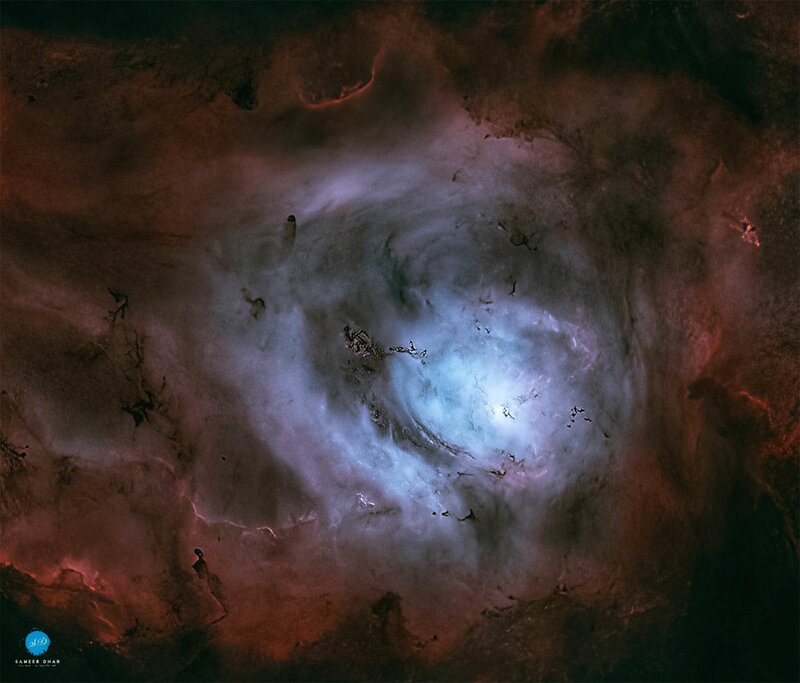Good morning, Rallypoint, and welcome to the August 8th edition of Astronomy Picture of the Day (APOD): "The Lagoon Nebula without Stars." One technique to better highlight the internal gas and dust features of a nebula is to digitally edit out all stars that may be present. The Lagoon Nebula lies between 4,000 and 6,000 light years from Earth in the constellation Sagittarius (The Archer). Discovered by Giovanni Hodiema before 1654, Charles Messier cataloged this nebula as 'M8' in 1764.
We clearly see the telltale red glow of ionized hydrogen, the blue of starlight reflected off of interstellar dust, and a number of dark, collapsing clouds of protostellar material called Bok globules. First noted by astronomers in 1940, available infrared data published fifty years later (in 1990) confirmed that stars were being born inside Bok globules. Scientists now believe that a typical Bok globule contains about 10 solar masses of material, and that they commonly result in the formation of double- or multiple-star systems.



 NASA
NASA Space
Space Science
Science Photography
Photography Astronomy
Astronomy


